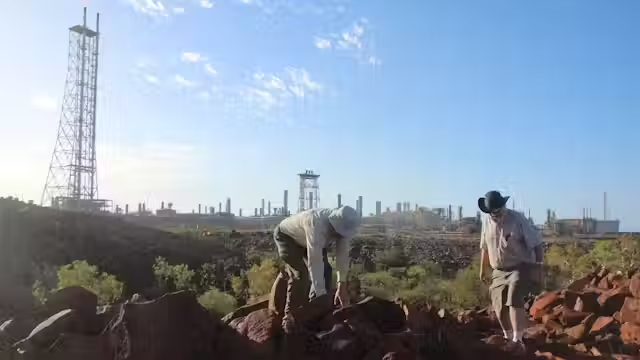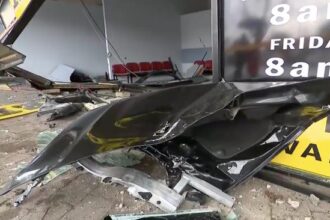North West Shelf Extension Threatens 50,000-Year-Old Murujuga Rock Art
Yesterday, Australia’s Environment Minister Murray Watt approved an extension of the North West Shelf liquefied natural gas project, allowing the Karratha-based gas plant in Western Australia to operate until 2070.
Cultural and Environmental Alarm Over Murujuga
This decision has ignited intense concern over the potential environmental and cultural consequences for Murujuga, home to over one million ancient petroglyphs, some dating back 50,000 years. These rock engravings are among the oldest known human artistic expressions on Earth.
Pollution Risks Delay to World Heritage Listing
The expansion is projected to release significant pollution, prompting the International Council on Monuments and Sites to recommend a delay in UNESCO’s decision to list Murujuga as a World Heritage site.
Key conditions for renomination include a complete halt of acidic emissions and a ban on further industrial development around the Murujuga Cultural Landscape.
Rock Art Holds Sacred and Global Significance
Murujuga’s rock art is more than just aesthetically stunning—it documents the spiritual traditions and history of Aboriginal Australians from the time of the continent’s first settlement.
The site is culturally sacred and globally unique, yet sits adjacent to a massive industrial zone that continuously threatens its integrity through emissions and development.
Government Prioritises Industry Over Heritage
Despite these cultural and spiritual values, the Western Australian Government has prioritized industrial growth over environmental preservation.
An official report, the Murujuga Rock Art Monitoring Program Year 2, recently analyzed the effects of industrial pollution on the fragile rock surfaces. This long-awaited report highlights how emissions are accelerating the erosion of petroglyph-bearing rocks.
Independent Research Confirms Alarming Findings
Our independent research, ongoing since 2018, confirms and expands upon these findings.
The Weathering Chamber study exposed different Murujuga rock types to controlled levels of sulphur dioxide (SO₂) and nitrogen dioxide (NO₂). Even low concentrations led to measurable degradation of the rock surfaces—an alarming result that supports broader concerns.
Porosity Levels Rise Around Industrial Zones
The second critical finding points to elevated porosity in granophyre rocks, particularly around the industrial zone.
This suggests a weakening of the rock’s surface, which threatens the longevity of the ancient carvings. Industrial pollution is cited as the most likely cause of this deterioration.
Laboratory Simulations Reinforce Damage Patterns
Jolam Neumann, a PhD researcher at the University of Bonn, conducted a simulation using rock samples from Murujuga to test the effects of six years of industrial pollution.
His study confirmed that both gabbro and granophyre rocks suffered increased porosity, while their mineral composition began to break down. Birnessite (manganese) and kaolinite (clay) showed significant degradation, causing the once-vibrant surface to weaken and crumble.
Porosity Confirms Advanced Surface Breakdown
“His work confirms industrial emissions are the cause of the elevated porosity in the report,” the research team noted.
“His work shows the seriousness of the porosity: it is symptomatic of a process causing the rapid disintegration of the rock surface.”
Government Blames Defunct Plant Despite Newer Emissions
Despite clear evidence of ongoing damage, the Western Australian Government’s summary of the report suggests a now-defunct 1970s power plant was responsible.
However, the figures don’t support this claim. The old plant emitted roughly 3,600 tonnes of NO₂ and 400 tonnes of SO₂ annually, while current operations emit over 13,000 tonnes of NO₂ and 6,500 tonnes of SO₂ each year—indicating far greater present-day pollution.
Historical Sample Reveals Accelerated Modern Damage
Neumann also examined a 1994 rock sample stored by archaeologist Robert Bednarik, which showed no signs of porosity.
By comparison, modern samples from the same area are visibly degraded, proving that the most significant damage occurred post-1994 and is actively ongoing.
Ancient Rock Varnish Under Threat from Acid Pollution
The petroglyphs were etched into a protective surface layer called rock varnish, formed over millennia by cyanobacteria that extract and deposit manganese and iron to shield themselves from harsh desert conditions.
This varnish grows at a glacial pace—just 1 to 10 microns every 1,000 years. A single strand of human hair is 100 microns wide, highlighting how irreplaceable and delicate this biological formation is.
Acidity Destroys the Rock’s Protective Layer
These bacteria thrive only in near-neutral pH conditions. Once acidic emissions rise, the balance shifts, leading to manganese loss—and the ultimate erosion of the varnish and the carvings it protects.
In Bednarik’s preserved 1994 sample, manganese made up 18.4% of the surface. By 2021, samples from the same location had just 9.6%. The rock varnish was thinner, riddled with holes, and largely absent of cyanobacteria near industrial sites.
Varnish Loss Equals Art Loss
“If you lose the manganese, you lose the rock varnish and the rock art,” the researchers explained.
This scientific truth underscores the cultural crisis at Murujuga, where unchecked emissions are erasing 50,000 years of human expression.
Technology Exists—but Was Not Enforced
Two viable technologies could eliminate the harmful NO₂ emissions threatening the site.
The first is selective catalytic reduction, which transforms NO₂ into harmless nitrogen and water. The second is to replace all gas-based heat production with clean electricity. Yet, neither solution was mandated as a condition for the project’s extension approval.
Global Heritage at a Breaking Point
Until industrial pollution is brought to zero, Murujuga’s sacred heritage remains in jeopardy.
This global treasure, a testament to Aboriginal ingenuity and connection to Country, could soon vanish under layers of industrial decay unless immediate and meaningful changes are enforced.






